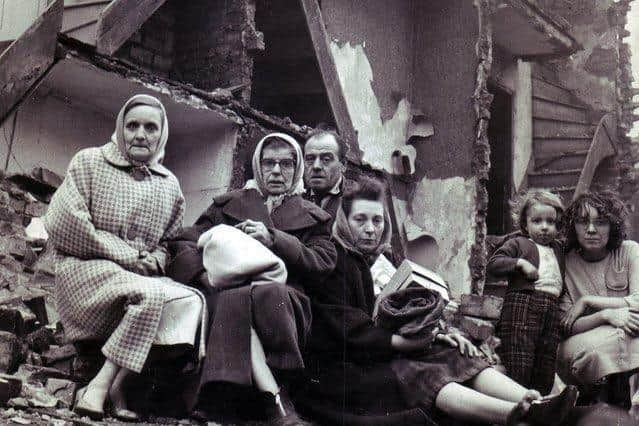Sheffield hurricane of 1962: Remembering the national disaster which killed four people
The 96mph winds that twice hit South Yorkshire 60 years ago killed three people in Sheffield and one in Barnsley, injured 250 people, left 250 people homeless and 70,000 homes damaged and saw the city declared a National Disaster Zone.
The dead were Jack Johnson, aged 17 of Attercliffe, Shirley Hill, wife of the Rev Colin Hill, the Vicar of Brightside, Ida Stubbs, aged 57, of Crookes, and Beryl Dickinson, aged 19, of Birdwell, Barnsley. All had been killed as chimneys toppled from their roofs into their homes.
Advertisement
Hide AdAdvertisement
Hide AdMany of the supposedly temporary prefab homes in Arbourthorne, Skye Edge and other areas of Sheffield were torn into shreds. A whole row in Arbourthorne was ripped apart.


One couple living in a caravan at Marsh Lane, Eckington managed to escape when their home was split in two by the wind.
Newspaper reports at the time say that suburbs on city hills such as Crookes were also badly hit and residents had to be evacuated.
The winds also toppled floodlight pylons at Bramall Lane and tower cranes at a building site at the College of Technology, as well as a rail line signal gantry at Heeley.
Advertisement
Hide AdAdvertisement
Hide AdOnly the swift action of a Sheffield to London train driver averted a rail disaster at Heeley, The Times reported. The story made national news and TV reporters such as Richard Dimbleby came to do reports.
Power lines were also torn down, creating a blackout, vehicles were overturned on roads and debris was everywhere.
The fire brigade dealt with 1,000 emergency calls, with a backlog of the same length.
What was the total damage bill for Sheffield hurricane 1962?
Advertisement
Hide AdAdvertisement
Hide AdThe Lord Mayor’s Gale Fund hit £8,500 in days as the homeless took shelter in community centres and Hurlfield School, commandeered by the council’s emergency team.
Initial estimates put the total bill for damage repairs at £5 million. The town hall was opened for 24 hours a day on the following weekend to deal with the number of people needing help.
Later, queues formed with people asking for assistance from the emergency fund.
Eventually, workers were brought in from other areas of the country to help with repairs and clearing-up operations.
Advertisement
Hide AdAdvertisement
Hide AdThey were put up at Endcliffe Drill Hall and RAF Norton. The number of calls for help to Sheffield Fire Brigade and the police jammed telephone switchboards.
Emergency electricity supplies were connected at Jessop Hospital for Women to supply heating to a two-day-old baby in an incubator.
On that day the hurricane brought havoc to many other parts of Britain. At least nine people were killed and road, rail and air services were battered.
From the south coast to the north of Scotland there were scenes of vast devastation. The strongest gust was 117.8mph, recorded at Lowther Hill, Lanarkshire.
Advertisement
Hide AdAdvertisement
Hide AdAt the height of the winds, Sheffield police and fire teams on duty had to cope with falling debris, chimney masonry and glass and shattered window frames flying everywhere as they tried to help people to safety.
